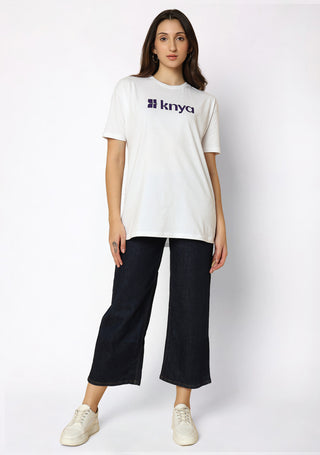Scrubs are an essential part of healthcare uniforms, designed to prioritize hygiene, safety, and comfort. Whether you’re a medical professional choosing scrubs for work or someone curious about their significance, understanding their history, benefits, and types can help you appreciate their role in the medical field. By selecting the right scrubs, you ensure both practicality and professionalism in your daily work routine.
What Are Scrubs?
Scrubs are specialized uniforms worn by healthcare professionals, including doctors, nurses, and medical staff, to maintain hygiene, safety, and comfort in clinical settings. Originally designed for surgeons and their teams, scrubs have evolved into a standard attire in hospitals, clinics, and laboratories. They typically consist of a short-sleeved or long-sleeved top and matching trousers, made from breathable, easy-to-clean fabric.
The History of Scrubs
The concept of scrubs has evolved significantly over time. Here’s a brief look at their journey:
- Pre-20th Century: Medical professionals often wore everyday clothing, which was unsanitary and increased the risk of infections.
- Early 1900s: Surgeons began wearing white coats over their clothes to symbolize cleanliness.
- 1918 Flu Pandemic: The need for proper protective gear became evident, leading to the use of masks and gloves.
- 1940s-1950s: Green and blue scrubs replaced white coats in operating rooms because they reduced eye strain and improved visibility under surgical lights.
- 1970s-Present: Scrubs became the standard uniform for healthcare professionals across various specialties, designed for comfort, protection, and efficiency.
Browse best Scrubs Collection
The Benefits of Wearing Scrubs
Scrubs are worn for several important reasons, including hygiene, safety, and practicality. Here are some key benefits:
Hygiene and Infection Control
Scrubs are designed to be easy to clean and disinfect, reducing the spread of bacteria and viruses. Hospitals and clinics use high-temperature washing methods to remove contaminants from scrubs.
Comfort and Mobility
Medical professionals work long shifts, often standing, walking, and bending for hours. Scrubs are made from lightweight, breathable fabrics that allow for flexibility and ease of movement.
Professionalism and Identification
Scrubs create a unified, professional appearance, making it easier for patients to identify healthcare staff. Many hospitals use color-coded scrubs to differentiate between departments.
Cost-Effectiveness
Scrubs are more affordable than regular clothing, and since they are designed for repeated washing and wear, they last longer. Many hospitals provide scrubs to employees, reducing personal expenses.
Protection Against Contaminants
Scrubs act as a protective barrier, preventing bodily fluids and other contaminants from coming into direct contact with the skin. Some scrubs are even designed with antimicrobial properties for added protection.
Convenient Storage
Most scrubs have multiple pockets, allowing healthcare workers to carry essential tools like pens, notepads, gloves, and medical instruments.
Shop the Best Lab Coats from Here!
How to Choose the Suitable Scrub for You?
Not all scrubs are the same, and choosing the right one depends on several factors:
Fabric Type
- Cotton Scrubs: Soft and breathable but may shrink after washing.
- Polyester Scrubs: Durable, wrinkle-resistant, and quick-drying.
- Blended Fabric Scrubs: A mix of cotton, polyester, and spandex, offering the best of all worlds—comfort, stretch, and durability.
Fit and Style
Scrubs come in different fits, including:
- Classic Fit: Loose and comfortable for easy movement.
- Modern Fit: More tailored, giving a professional look while maintaining comfort.
- Athletic Fit: Designed for those who prefer a slimmer, form-fitting style.
Functionality and Features
- Pockets: Look for scrubs with multiple pockets for carrying essential tools.
- Elastic or Drawstring Waistbands: Choose what feels more comfortable for long shifts.
- Side Slits and V-Necks: Provide better ventilation and ease of movement.
Color and Design
Many hospitals and clinics have dress codes, so check before purchasing. If given a choice, opt for colors that suit your preference and enhance professionalism.
Different Types of Scrubs
Scrubs come in various styles depending on the healthcare setting:
Basic Scrubs
- Simple V-neck or round-neck tops with matching pants.
- Commonly used in hospitals and clinics.
Surgical Scrubs
- Sterile, usually green or blue, designed for use in operating rooms.
- Made from lightweight material to prevent overheating.
Antimicrobial Scrubs
- Treated with antimicrobial agents to reduce bacteria and odor buildup.
- Ideal for those working in high-exposure environments.
Specialty Scrubs
- Designed for specific professions like dental hygienists, veterinarians, and pediatric nurses.
- Feature fun patterns or extra functional elements.
Fashion Scrubs
- Trendy designs with stylish cuts, fitted waists, and a variety of colors and patterns.
- Ideal for healthcare professionals who want to add a personal touch to their uniform.
Where to Buy Scrubs?
If you’re looking for high-quality scrubs, consider these options:
Online Retailers
- Amazon
- FIGS
- Cherokee
- Grey’s Anatomy by Barco
Medical Supply Stores
Many local stores sell scrubs, allowing you to try different sizes before purchasing.
Uniform Shops
Specialized uniform stores often have a wide range of options, including customized scrubs.
Hospital Supply Vendors
Some hospitals provide scrubs for employees or have specific vendors for approved uniforms.





















































